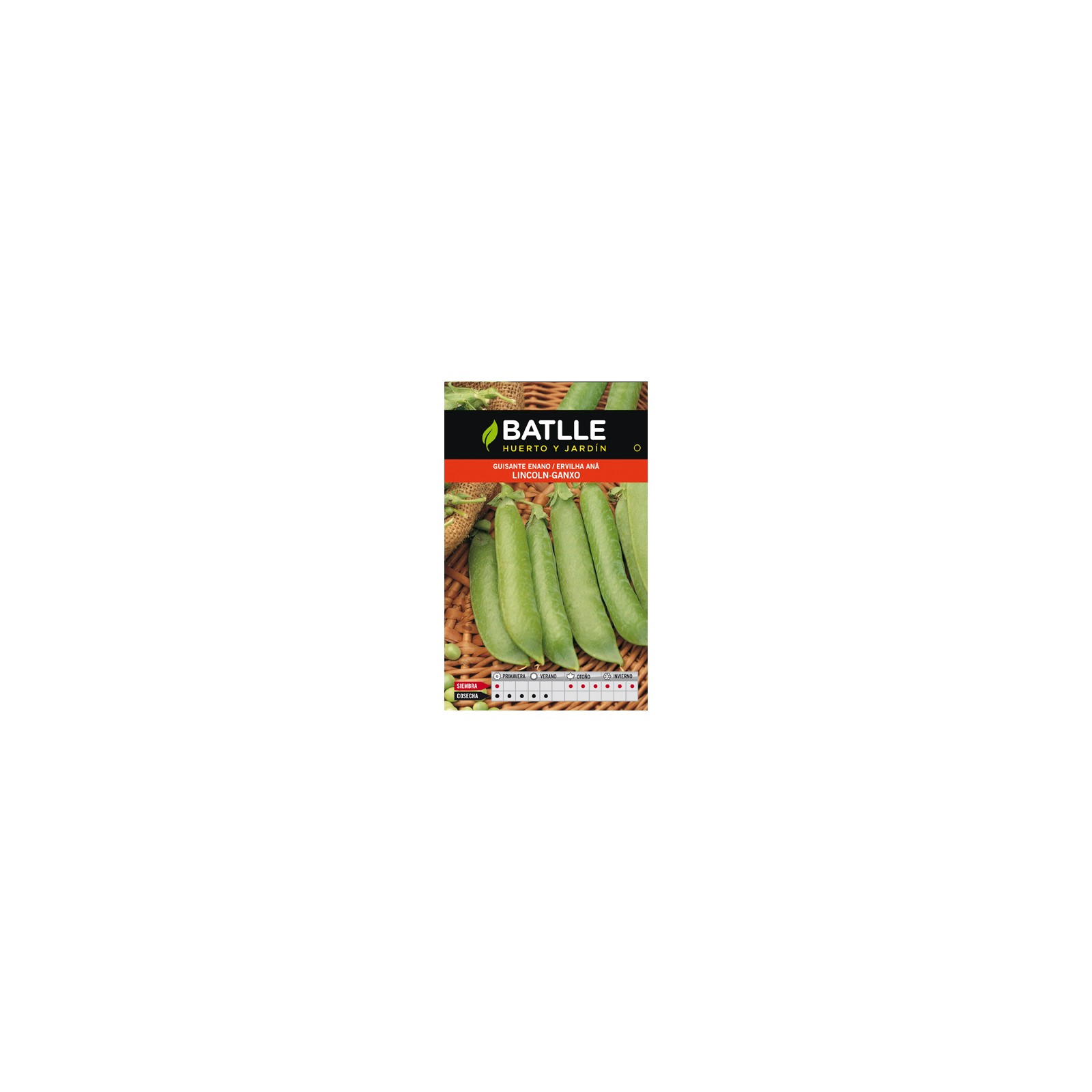The Lincoln Pea (Pisum sativum) is an annual plant belonging to the legume family, prized for its tender seed and pods depending on the variety cultivated. This dwarf variety typically grows to a height of 25 to 70 cm and produces striking white flowers. It is known for its ease of cultivation, thriving in moderate climates and featured in many family gardens.
General Cultivation Tips for Dwarf Peas:
- Best suited for temperate and moist climates, however, it is not resistant to severe frosts (below -6ºC).
- The optimal growth temperature ranges between 14 and 26ºC; excessive heat can be detrimental.
- Essentially, humidity is crucial, yet it cannot endure waterlogging that may lead to root suffocation and plant death.
- Prefers light to medium-textured soil that is fresh yet well-drained; avoid planting in clayey soils or those with excessive moisture.
- It's not overly demanding in nutrients, although a fertilizer rich in phosphorus and potassium is beneficial for its growth.
- Sowing occurs directly into the cultivation area, in rows that are 60-70 cm apart.
- In warm climates, sow in September-October-November, and in colder regions from February to May.
- Herbicide application may be useful for controlling weeds in larger plots.
- Benefits tremendously from sprinkler irrigation, as consistent moisture is essential during flowering.
- With appropriate planting times and conditions, it experiences minimal pest issues, though aphids and diseases like anthracnose and powdery mildew may occur.
- Harvest gently once the pods and grains are formed for a flavorful and nutritious vegetable.
Lincoln Dwarf Pea - A medium cycle and high yield variety. Grows to 65-75 cm with bluish-green coloring. The first fertile node is at number 14, producing 1-2 pods, each 9-10 cm long, filled with 8-10 sweet and tender seeds.




